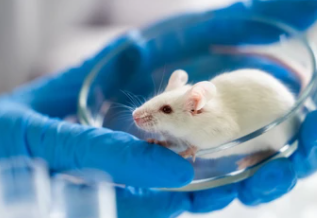Toxicity Testing of Venom Peptide/Protein in Standard Models
Animal models are a key part of biological research. Because in most of the things we want to do, experiments on humans are unacceptable, and we need some kind of substitute. The most common are yeast, fruit flies, nematodes, mice, and zebrafish.
The Median Lethal Dose (LD50) Assay
LD50 is the most important parameter to evaluate the acute toxicity of chemical substances, and it is also the basic standard for the acute toxicity classification of different chemical substances. The greater the acute toxicity of a chemical substance, the smaller its LD50 value.
Minimum Necrosis Dose (MND) Assay
Dissolve the studied venom peptide/protein in different amounts in sterile saline solution, and perform injection experiments in the target area of mice or other animal models. After the injection, the animals were killed by inhaling carbon dioxide. Then a sample was taken to determine the necrotic lesions of the tissue, and the MND was estimated by linear regression analysis. MND is defined as the dose that causes a necrotic area with a diameter of 5 mm three days after injection.
The Median Effective Dose (ED50) Assay
The effect produced by a drug varies with the concentration that is present at its site of action and usually approaches a maximum value beyond which a further increase in concentration is no more effective. A useful measure is the median effective dose, ED50, which is defined as the dose producing a response that is 50 percent of the maximum obtainable. ED50 values provide a useful way of comparing the potencies of drugs that produce physiologically similar effects at different concentrations.
The MND-median Effective Dose (MND50) Assay
The test is carried out as above. The neutralizing ability of antivenom, expressed as MND-median effective dose (MND50), is estimated as the volume of antivenom which reduces the diameter of necrotic lesions by 50% when compared with the diameter of the lesion in mice injected with the control venom/saline mixture. The antivenom was considered ineffective when none of mice, administered with the maximum amount of antivenom, survived.
Other Assays
Creative Proteomics is an expert in the field of venom research. In addition to the above, we can provide you with services including:
- Minimum Hemorrhagic Dose (MHD)
- Percentage Thrombolysis
- Coagulation-Altering Activity
- Edema-Forming Effects
Creative Proteomics can help you verify the actual effect of venom peptide/protein in standard animal models, and we can carry out any specific experiments according to your needs.
Please contact us for more information.
For research use only. Not intended for any clinical use.

